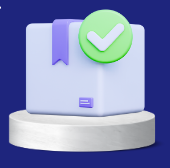Abstract
The pilot project introduced a blockchain-powered Digital Product Passport (DPP) for more effective battery lifecycle management, targeting critical challenges in regulatory compliance, traceability, and circular practices. By merging Traced Systems’ blockchain capabilities with Cling Systems’ platform, the DPP securely tracked each battery’s journey—from production and use to collection, repurposing, and recycling. Over the course of the pilot, stakeholders tested the DPP’s functionality by logging battery events in real-time, thereby demonstrating its capability to decentralize vital data and foster seamless collaboration among OEMs, collectors, and recyclers.
The pilot aimed not only to streamline user interaction flows but also to highlight distinct roles and responsibilities, ensuring transparent, accountable, and efficient processes. Key findings show how the DPP not only meets evolving regulatory demands but also creates a foundation for scalable, sustainable solutions in the circular economy. Moving forward, future enhancements will focus on improving usability, expanding functionalities, and seamlessly integrating the DPP with existing and forthcoming regulatory frameworks—ultimately reinforcing its position as a critical enabler of sustainable battery management. The success of this pilot underscores the transformative potential of blockchain technology in shaping a more responsible and resource-efficient future.
Cybersecurity is managed via robust encryption protocols that secure sensitive battery data, protecting trade secrets, vendor details, and other confidential information. Data is encrypted in transit and at rest so that only regulatory authorities or manufacturer-designated parties can access it. This approach, leveraging blockchain-based encryption as it was a feature designed during the EBSI PCP project on the Chromia blockchain, ensures data integrity and strict confidentiality throughout the battery lifecycle.
In the context of this use case, the Digital Product Passport is designed to meet the required open standards for interoperability, secure data management, and regulatory compliance throughout the battery’s lifecycle. The solution leverages Chromia’s blockchain, which uses open APIs, a relational data model, and other open standards to ensure seamless integration, but the implementation itself remains proprietary. In short, while the system adheres to open standards, it is not released as open source.
The target groups and stakeholders for the battery Digital Product Passports are the following:
- Battery Manufacturers / OEMs: These are the companies that produce batteries (e.g. Instagrid) and are responsible for initiating the passport by attaching QR codes and logging key lifecycle data.
- Battery Collectors: Entities like Batteriretur handle the collection and initial processing of end‐of‐life batteries, ensuring that batteries are properly logged when they leave the facility.
- Battery Recyclers & Repurposers: Organizations that recycle or repurpose batteries verify the recycling process, log compliance data, and provide certificates for recycling efficiency.
- End Users & Secondary Market Participants: This group includes the consumers or businesses who rely on verified battery history for safety, performance, and resale value, as well as platforms facilitating secondary battery markets (e.g. Cling Systems).
- Regulatory Authorities & Compliance Bodies: Government agencies and regulators that need access to immutable, transparent lifecycle data to ensure that battery recycling and repurposing meet environmental, safety, and legal standards.
- Supply Chain & Circular Economy Stakeholders: Broader partners involved in logistics, data management, and sustainability initiatives who benefit from a transparent, traceable battery lifecycle fostering enhanced collaboration across the value chain.
Value Proposition
DLT is the ideal technology for transforming battery lifecycle management. By leveraging a decentralized ledger, our Digital Product Passport (DPP) ensures that every battery’s journey—from manufacture through end-of-life recycling—is recorded immutably and transparently. This guarantees verifiable data on battery origin, chemistry, and usage history, which is crucial for regulatory compliance and sustainability.
The inherent security of DLT minimizes the risk of fraud and data tampering, thereby building trust among OEMs, collectors, and recyclers. Smart contracts automate ownership transfers and compliance checks, reducing manual errors and streamlining operational processes. Moreover, the use of QR code integration links physical batteries with their digital counterparts in real-time, ensuring that all lifecycle events are captured accurately.
Overall, DLT empowers stakeholders to achieve circularity in battery management by facilitating efficient repurposing and recycling while simultaneously reducing costs and environmental impact. This robust, secure, and transparent approach is why DLT is indispensable for the modern battery use case.

Identity Management

Data Provenance

Governance

Token and asset creation and exchange

Process optimisation

Automation